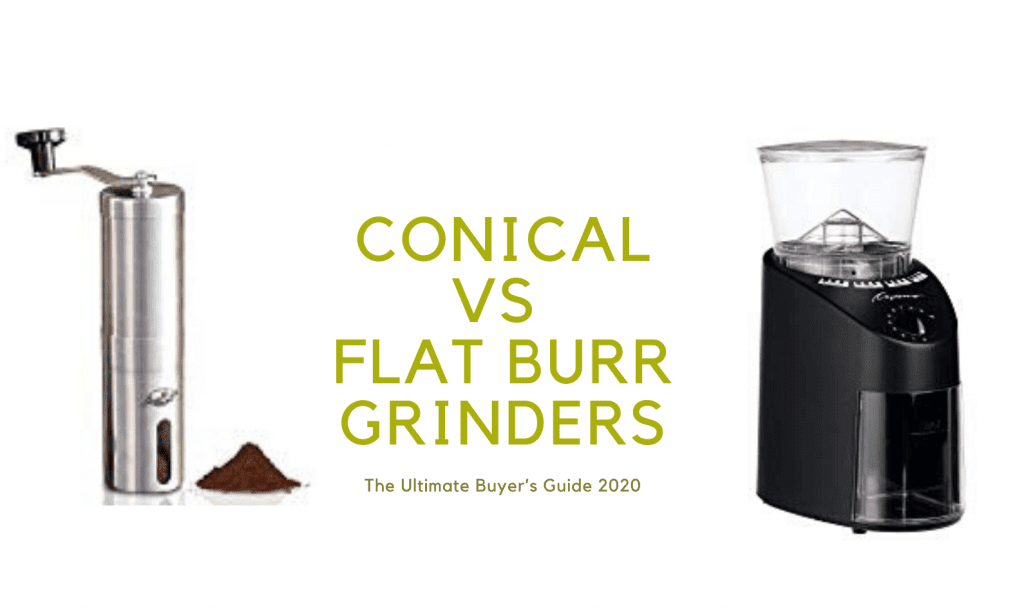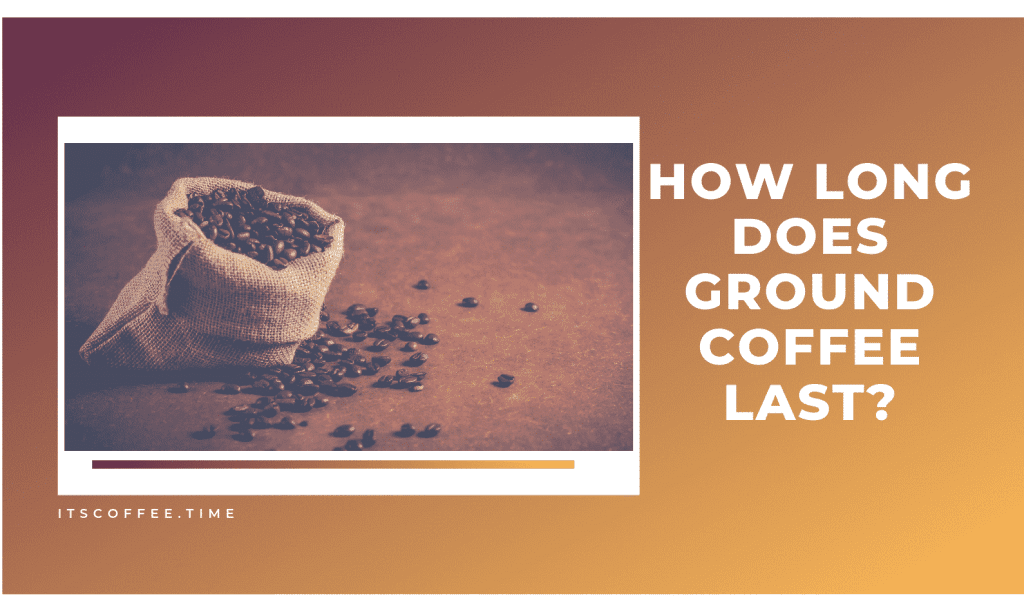Conical Vs Flat Burr Grinders: How do they Differ? Complete Guide Making coffee perpetually starts with grinding occasional beans for the coffee drinkers that like better to create their brews as recent as attainable. And when it comes to grinding your coffee beans, you need to invest in a good grinder, which in many instances means you need to choose between the two main types, which are blade and burr grinders. But the choice between blade and burr grinder is always an easy one for many coffee lovers, given that the latter provides more consistent coffee grinds and is generally more efficient. However, with a burr grinder, you still need to choose between conical and flat burr grinders.
Both conical and flat burr grinders do an amazing job when grinding coffee beans, but there are some subtle differences between the two you should know to make an informed choice. In this piece, we highlight these differences and also some of the similarities between the two grinders.
Main Differences Between Conical Vs Flat Burr Grinders?
Conical Burr Grinder
Conical burr grinders get their name from the fact that they will include some cone-shaped burrs. The burrs will consist of a cone-shaped ring that fits into another larger cone-shaped ring, and they will grind by pulling the beans between the rotating rings. Unlike the flat burrs, the conical burrs will rotate at a relatively slower speed, which means they will produce less noise and heat. The less heat means you are less likely to burn your coffee beans when using a conical burr grinder. But the convenience and quieter operation that comes with the conical burr grinder comes at a price as they are generally pricier than the flat burr grinders.
Flat Burr Grinder
With flat burr grinders, you get two flat-lying burr rings and hence the name. One of the rings faces downwards and the other upwards, and when grinding, the beans will fall between them where the sharp teeth will crash them into smaller particles. Instead of relying on ridges to crash and grind the beans like with the conical burr grinders, the flat burr grinder will use sharp teeth on the edges of the flat plates. However, the design and grinding mechanism of the flat burrs make them more prone to clogging than the conical burrs and will also produce more heat, which increases the likelihood of burning the coffee beans.
Conical Vs Flat Burr Grinders
If you’re searching for a decent cup of black coffee, conical and flat burrs are not much of a concern for you. Sure, flat burrs could eventually enter the house production arena, but their effectiveness lies more in espresso brewing. If you’re searching for a wonderful coffee grinder for your home, you may still want to hold off on the flat burrs. Grinders that feature flat burrs are quite high-priced, and you’ll still be delighted with the quality of conical burrs.
Read more about Best Burr Coffee Grinders under $200
I cannot give you a definitive answer on which burr type you should pursue. If there were a transparent and obvious answer, there wouldn’t still be any debate. It’s up to you to determine which type will match your needs and unique circumstances.
Similarities- Conical Vs Flat Burr Grinders
When looking at the flat and conical grinders from the surface, many people will hardly tell them apart without reading the description. Unless you take them apart, there are no obvious differences between the two as they are quite similar in both appearance and performance. But here are the two key similarities between the two
-
Coffee Tastes the Same
Holding other factors constant such as the brewing time and type of coffee, coffee made from grounds from the flat and conical burr grinder will taste just the same. There is no real difference between the taste, and most coffee drinkers cannot tell what was used to make their grounds.
However, if you are grinding large volumes at a go using both grinders, the flat burr grinder is more likely to burn the coffee beans as it produces more heat. In case this was to happen, then there would be some slight difference in the taste, but you would need to have very keen palates to notice.
-
Grounds Quality is the Same
Both coffee grinders can produce some top-notch quality grounds regardless of the consistency you want. And this is often in contrast to the blade grinder that may be quite inconsistent.
Since both grinders will have different settings, you will not only be able to get high-quality coffee grounds but can make adjustments to get your desired consistency.
Dissimilarity Conical Vs Flat Burr Grinders
Conical and flat burr grinders can produce high-quality and consistent grinds, but the similarities probably end there. Anyone who has used both will agree that once you understand the two, there are various noticeable differences from the amount of heat produced to the cost.
-
Work Mechanism
The working mechanism is quite different given that the conical burr grinder will use a couple of cone-shaped burrs, and one burr will stay stationary. Simultaneously, the other rotates during grinding, and the beans go in vertically but at a slight angle.
On the other hand, with the flat grinders, there are two rings of burrs that are set parallel to the ground and with one facing up and the other facing down. Like with a conical burr, one burr moves, but the other stays stationary, and coffee beans will be dropped down vertically.
Also, the flat grinder will spin faster. Hence, it will require more power to operate, which means they will mostly be electric, while the conical burrs spin relatively slower, meaning they do not require a lot of power, which means they will also work for hand-operated grinders.
-
Heat Output
Overall the flat burr grinders are more powerful, and they will also spin faster than the conical burr grinder. And while this extra power can help speed up the grinding process, it also comes with a huge disadvantage: increased friction that results in more heat output.
Hence, the flat burr grinder will produce significantly more heat than the conical burr grinder, which in some instances can be a big problem as it increases the likelihood of the coffee beans getting burnt during grinding.
-
Coffee Beans Wastage
When it comes to wastage, you will hardly find any grinder that can grind the coffee beans without wasting anything, but what matters is the number of beans wasted.
Both conical and flat burr grinders will waste some of the beans, but the latter seems to waste significantly more coffee than the former due to its design and grinding mechanism.
Flat grinders have flat grinding burrs, which means that some coffee gets trapped in the grinding mechanism. And if you do not clean up the grinder thoroughly after every use, this trapped coffee can go bad and end up contaminating other batches of coffee beans you add to the appliance for grinding, which in turn affects the quality of the coffee you make.
A conical burr grinder will have little wastage because the design and grinding mechanism means that most of the coffee will always flow straight down, and there are no hard-to-reach places where coffee can get trapped.
-
Noise
The extra power and speed you get with the flat burr grinder also come with some extra noise, and these grinders will be relatively louder than the conical burr types.
However, both coffee grinders will still produce some significant noise when grinding, and unless you use them side by side, it is hard to tell which one produces the most noise.
-
Cost
With their more powerful motors and the ability to grind larger volumes of coffee beans within a short time, the flat burr grinders will come with a higher price tag than the conical burr grinders.
You can easily get a high-quality electric conical grinder for even less than half of what you would pay to get a top-notch flat burr grinder. And if you go for a manual hand-operated conical grinder, you will even pay less.
Read more about Standard Coffee Cup Sizes
Conclusion: Conical Vs Flat Burr Grinders: How Do they differ?
If you’re searching for an honest cup of black coffee, conical and flat burrs are not much of a concern for you. Sure, flat burrs might eventually.






